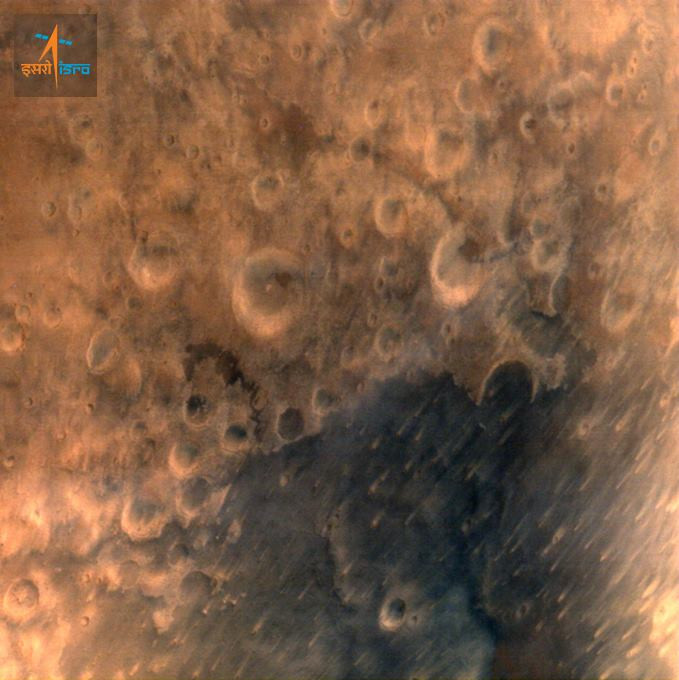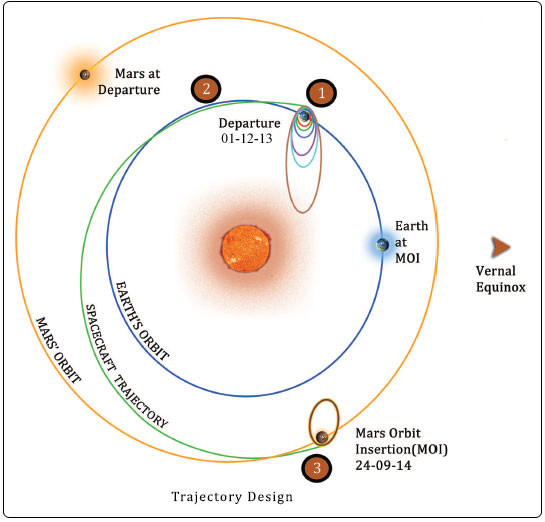India's Mars Orbiter Mission Sends Home Its First Image Of Red Planet

India's Mars Orbiter Mission spacecraft has beamed home the first image taken from the camera on board.
The probe is now circling Mars in an elliptical orbit, with its nearest point to Mars (periapsis) being 421.7 km and the farthest point (apoapsis) at 76,993.6 km.
The spacecraft performance was normal, said an Indian Space Research Organisation (Isro) press release.
The inclination of the orbit with respect to the equatorial plane of Mars is 150 degrees, as intended. In this orbit, the spacecraft takes 72 hours 51 minutes and 51 seconds to go round Mars once.
In the coming weeks, the spacecraft will be thoroughly tested in the Mars orbit and systematic observation of the planet using its five scientific instruments will begin.
The spacecraft successfully entered orbit around the planet on Wednesday morning (24 September) by firing its 440 Newton Liquid Apogee Motor along with eight smaller liquid engines.
The engine firing operation which began at 07:17:32 IST lasted for 1388.67 seconds and changed the velocity of the spacecraft by the intended 1099 metre/sec.
Launched on 5 November, 2013 from India's Satish Dhawan Space Centre, Sriharikota, the craft has travelled around 666 million kilometres.

The probe will study Mars' surface features, morphology, mineralogy and the atmosphere using indigenous scientific instruments consisting of a camera, two spectrometers, a radiometer and a photometer weighing 15kg in all.
Among the major technological objectives realised by the mission are the design of a Mars orbiter with a capability to survive and perform Earth-bound manoeuvres, cruise phase of 300 days, Mars orbit insertion and on-orbit phase around Mars.
Deep space communication, navigation and the autonomous features to handle contingency situations are the other objectives.
With hints of water and microbial life, and an atmosphere, though hardly 1% as dense as the earth's, Mars is the obvious choice of a stop-over in space journeys of the future.
Mars missions date back to the sixties beginning with the Mariner series from Nasa to the rovers in this century.
Even as the Indian spacecraft circles the planet with four other craft, two of Nasa's rovers, Opportunity and Curiosity, are exploring the landscape below.
© Copyright IBTimes 2025. All rights reserved.




















